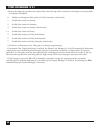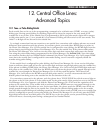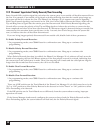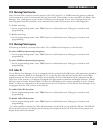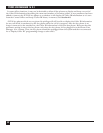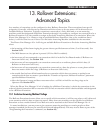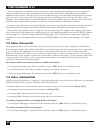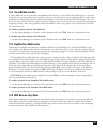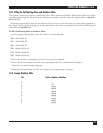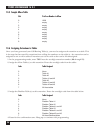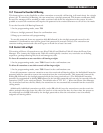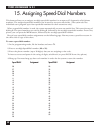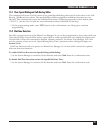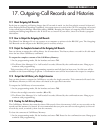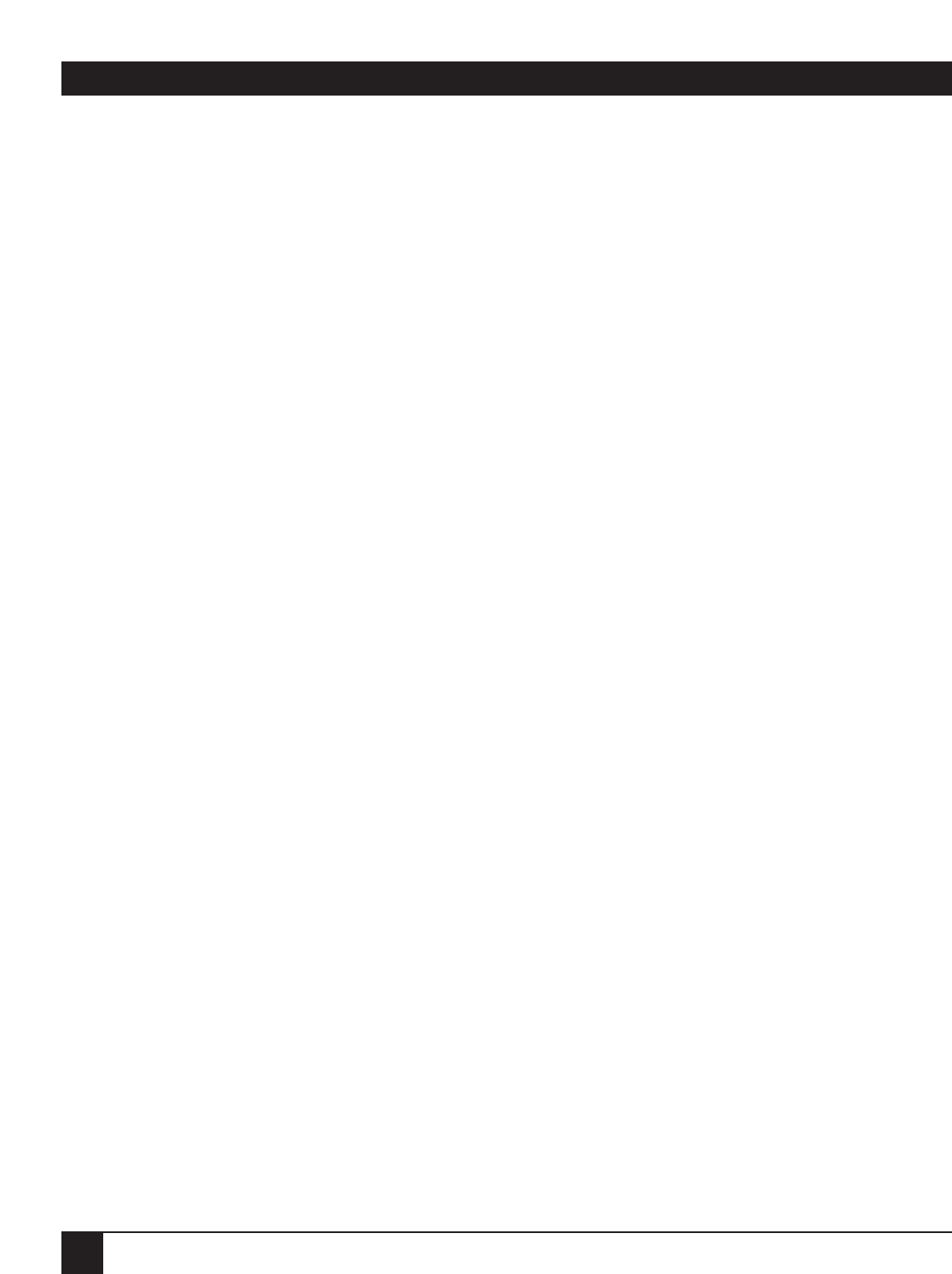
PHONE LINE MANAGER 16 X 4
44
14. Call Barring (Toll Restriction)
14.1 About Call Barring
The Call Barring (or Toll Restriction) feature lets you bar specific extensions from calling certain types
of phone numbers (or prefixes). This feature is most commonly used to bar toll calls, (long-distance,
international, and/or 1-900 number calls). If this is not a concern in your office, there is no need to
program this feature.
When Call Barring is operating, the system consults a Call Barring Disallow Table of phone numbers (or
prefixes) each time a call is placed. It scans the table as each digit is entered. If a match with the Disallow
Table is found, the call is denied. If no match is found, the call is permitted. Most commonly a Disallow
Table will include the prefixes “1” (long-distance calls) and “011” (overseas calls).
Exceptions to the Disallow Table are needed to allow users to call “1-800” numbers when all other
numbers beginning with “1” are barred. In this case, you will need to create an Allow Table and enter the “1-
800” prefix. Similarly, you can enter any other “exceptions” to numbers barred such as out-of-town suppliers
or clients. Because the system searches the Allow Table(s) first, the Disallow Table will not bar the call.
Creating toll restrictions requires two steps. First you will need to create one or more Disallow and Allow
Tables. Then you will need to assign individual extensions to the appropriate table(s).
The system can store up to three call-barring Allow Tables and three Disallow Tables. For most offices,
one Disallow Table, or one per call group, is sufficient. But if you want to have a wide variety of restriction
options, you can use up to three Disallow Tables and three Allow Tables.
14.2 Call-Barring (Toll-Restriction) Details
As an extension dials each digit, the Phone Line Manager 16 x 4 scans the complete sequence of digits
dialed to check if the extension is barred from dialing the sequence. If the extension is restricted from
dialing the number, the outside line is immediately released and the person at the extension will hear the
fast error tone.
A special case can arise if an outgoing call is made from an unrestricted extension and then transferred
to a restricted extension. If the extension were to dial another digit, the unit would normally examine the
complete sequence of digits dialed and determine that the extension is not allowed to make the call. The
extension would be disconnected from the outside line. A special provision has been made to the operation
of the Phone Line Manager 16 x 4 such that the it will not check the call barring restrictions on a transferred
call unless and until the extension flashes in order to place the call on hold or transfer the call. This allows
the caller to enter additional digits (perhaps to a remote voice-mail unit) without getting disconnected from
the outside line.
A second special case can arise if the outside lines are configured to allow a switchhook (flash) to be
sent to the outside line. A switchhook to an outside line may be needed to affect certain features like Call
Waiting. However, some Central Office switches may give a new dial tone in response to the switchhook. In
this case, the caller could possibly dial an allowed number, send the switchhook, and then dial a restricted
number. The Phone Line Manager 16 x 4 is only able to examine the digits dialed starting at the beginning
of the sequence and the call would not be barred. If this is a concern, you may want to prohibit the
switchhook from being sent to an outside line (see Section 6.3).



